How Can You Bake the Perfect Cheesecake?
Baking a perfect cheesecake is a skill that requires precision, patience, and a bit of know-how. It’s a dessert that can be both creamy and visually appealing, making it a crowd-pleaser.
- The Science Behind a Perfect Cheesecake
- Understanding the Chemistry of Cheesecake
- Why Temperature Control Matters
- The Role of Ingredients in Texture and Flavor
- Essential Ingredients for a Flawless Cheesecake
- Selecting the Right Cream Cheese
- The Importance of Room Temperature Ingredients
- Sugar, Eggs, and Flavorings
- Crust Options and Considerations
- Must-Have Equipment for Cheesecake Success
- Choosing the Perfect Springform Pan
- Mixer Options: Stand vs. Hand Mixer
- Water Bath Essentials
- Thermometers and Other Helpful Tools
- Preparing the Perfect Cheesecake Crust
- How Can You Bake the Perfect Cheesecake? Step-by-Step Guide
- Mixing the Filling Properly
- The Water Bath Method
- Ideal Oven Temperature and Position
- Knowing When Your Cheesecake Is Done
- Preventing Common Cheesecake Disasters
- Avoiding Cracks and Sunken Centers
- Dealing with Overbaking and Underbaking
- Troubleshooting Texture Problems
- Fixing Last-Minute Issues
- Cooling and Chilling Techniques for Optimal Results
- Serving and Storing Your Masterpiece
- Perfect Slicing Techniques
- Creative Topping Ideas
- Proper Storage Methods
- How Long Will Cheesecake Stay Fresh?
- Conclusion
- FAQ
- What is the best way to prevent cracks in a cheesecake?
- How do I know when my cheesecake is done baking?
- Can I use a different type of cheese instead of cream cheese?
- How long should I refrigerate my cheesecake before serving?
- What are some creative topping ideas for cheesecakes?
- How can I achieve a smooth and creamy cheesecake texture?
- Can I freeze my cheesecake for later use?
- How do I store leftover cheesecake?
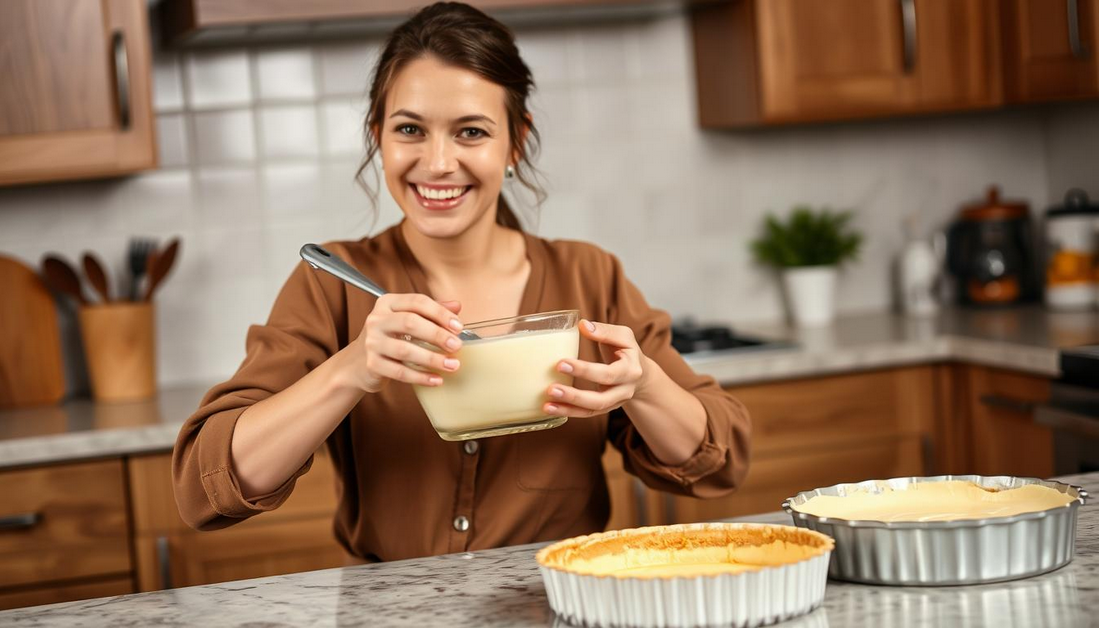
To achieve this culinary masterpiece, understanding the science behind a perfect cheesecake is crucial. With easy-to-follow baking tips and tricks, you’ll be well on your way to creating a delicious dessert that will impress anyone.
Whether you’re a seasoned baker or a newcomer to the world of cheesecakes, our comprehensive guide has got you covered, providing you with a reliable cheesecake recipe to try at home.
Key Takeaways
- Understand the science behind a perfect cheesecake
- Learn easy-to-follow baking tips and tricks
- Discover a reliable cheesecake recipe to try at home
- Get tips on creating a visually appealing dessert
- Impress your guests with a deliciously creamy cheesecake
The Science Behind a Perfect Cheesecake
To achieve cheesecake perfection, one must grasp the underlying chemistry and baking principles. Understanding these elements can significantly enhance your ability to bake a flawless cream cheese dessert.
Understanding the Chemistry of Cheesecake
The chemistry of cheesecake involves the interaction of various cheesecake ingredients, such as cream cheese, eggs, and sugar. When these ingredients are combined and baked correctly, they result in a smooth and creamy dessert. The proteins in eggs provide structure, while sugar adds sweetness and tenderness.
The role of cream cheese is pivotal, as it contributes to the cheesecake’s texture and flavor. Using high-quality cream cheese is essential for achieving the desired consistency and taste in your cheesecake.
Why Temperature Control Matters
Temperature control is crucial in baking the perfect cheesecake. It affects the texture and structure of the cheesecake. A water bath, for instance, helps in maintaining a consistent temperature around the cheesecake, reducing the risk of cracking.
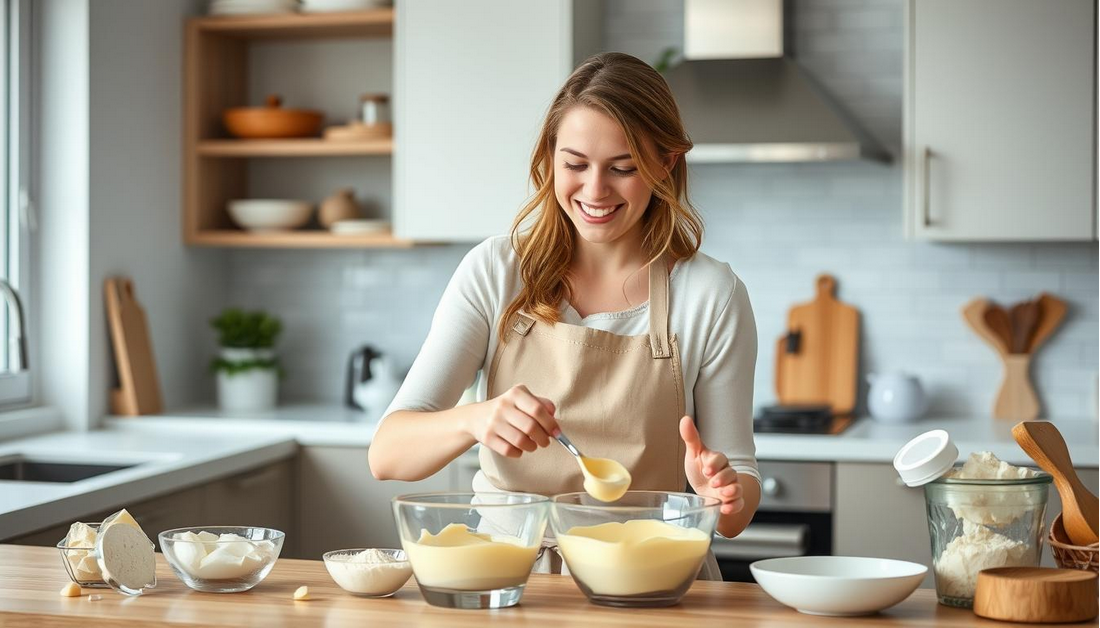
The Role of Ingredients in Texture and Flavor
The texture and flavor of a cheesecake are largely determined by its ingredients. For example, the ratio of sugar to eggs can affect the cheesecake’s texture. Moreover, the quality of ingredients like cream cheese and vanilla extract can significantly impact the final flavor.
| Ingredient | Role in Cheesecake | Impact on Texture and Flavor |
|---|---|---|
| Cream Cheese | Primary component | Affects texture and flavor significantly |
| Eggs | Structure provider | Influences texture and richness |
| Sugar | Sweetness and tenderness | Impacts flavor and texture |
By understanding the roles of different cheesecake ingredients and applying cheesecake baking tips, such as proper temperature control, you can significantly improve your cheesecake baking skills.
Essential Ingredients for a Flawless Cheesecake
The secret to a flawless cheesecake lies in the quality of its ingredients. A cheesecake is a delicate balance of flavors and textures, and each component plays a vital role in its overall success.
Selecting the Right Cream Cheese
The foundation of a great cheesecake is its cream cheese. Full-fat cream cheese is essential for achieving the right texture and flavor. Avoid low-fat or non-fat versions, as they can result in a cheesecake that’s too dense or dry. Popular brands like Philadelphia are often recommended for their consistent quality.
The Importance of Room Temperature Ingredients
Using room temperature ingredients is crucial for a smooth and even batter. This ensures that the cream cheese, eggs, and other ingredients mix together seamlessly, reducing the risk of lumps and uneven texture. As
“The key to a silky cheesecake is in the preparation of its ingredients.”
Sugar, Eggs, and Flavorings
Sugar not only adds sweetness but also affects the texture. Eggs are vital for structure and richness. Flavorings like vanilla extract can enhance the cheesecake’s overall taste. It’s essential to balance these ingredients to achieve the desired flavor profile.
Crust Options and Considerations
The crust is just as important as the filling. A classic graham cracker crust is a popular choice, but other options like cookie crusts or nut crusts can add unique flavors. The key is to ensure the crust is evenly baked and complements the filling.
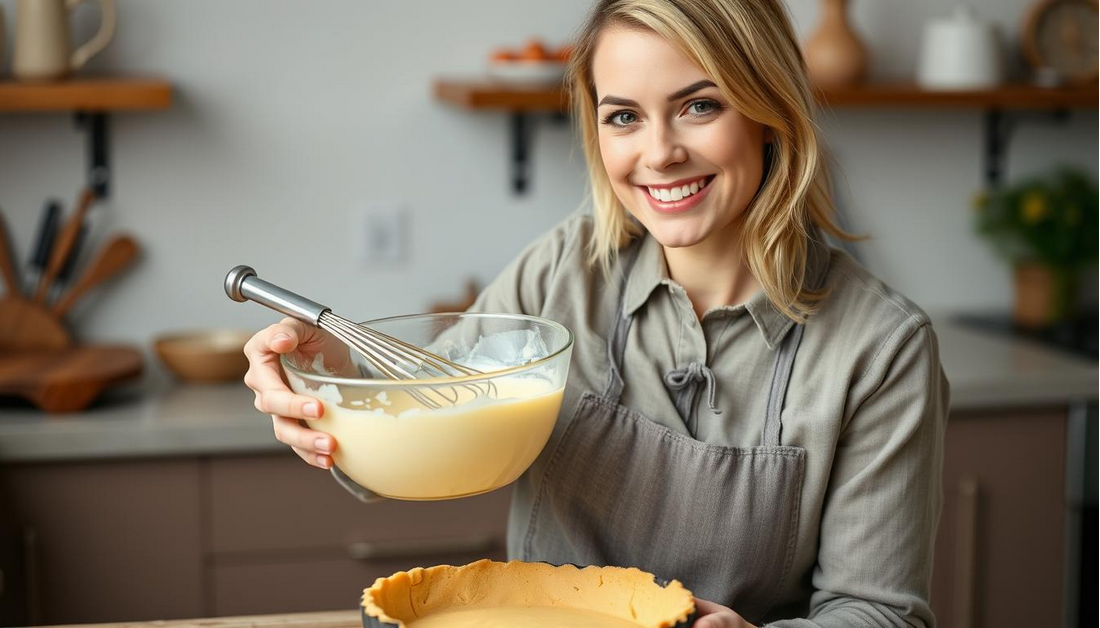
By focusing on these essential ingredients and their roles, you can create a cheesecake that’s not only delicious but also visually appealing. The right ingredients, combined with proper techniques, will elevate your cheesecake to the next level.
Must-Have Equipment for Cheesecake Success
Baking a perfect cheesecake requires not just the right ingredients, but also the right equipment. Having the proper tools can make a significant difference in the outcome of your cheesecake, ensuring it turns out smooth, creamy, and crack-free.
Choosing the Perfect Springform Pan
A springform pan is indispensable for baking cheesecakes. It allows for easy removal of the cheesecake once it’s baked and cooled, minimizing the risk of cracking. When selecting a springform pan, consider the size and material. A 9-inch pan is standard, but you can opt for smaller or larger sizes depending on your needs. Non-stick pans are convenient for easy release, but ensure they are of high quality to withstand high temperatures.
Mixer Options: Stand vs. Hand Mixer
Whether to use a stand mixer or a hand mixer depends on your preference and the level of convenience you’re looking for. Stand mixers are powerful and can handle large batches, making them ideal for cheesecakes that require thorough mixing. Hand mixers, on the other hand, are more portable and easier to clean, suitable for smaller recipes.
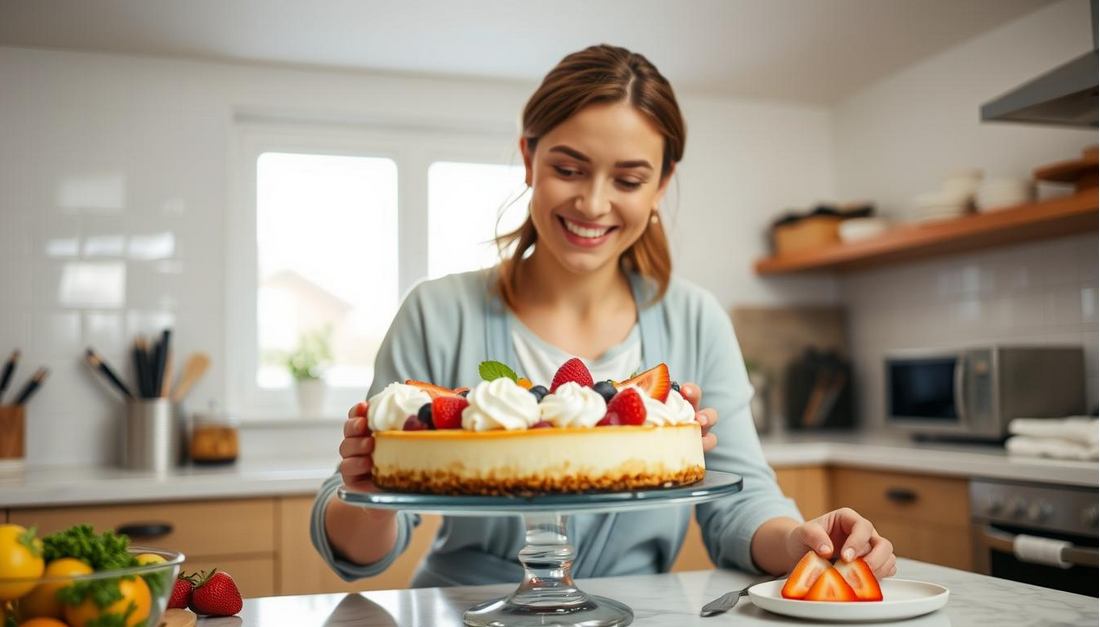
Water Bath Essentials
A water bath is crucial for preventing cracks and ensuring even cooking. It involves placing the cheesecake pan in a larger pan filled with water. This method helps maintain a moist environment in the oven and reduces the risk of overcooking the edges. To implement a water bath effectively, use a large, leak-proof pan and ensure the water level reaches halfway up the sides of the cheesecake pan.
Thermometers and Other Helpful Tools
Thermometers are vital for achieving the perfect bake by ensuring your oven is at the right temperature. An oven thermometer can help you verify the accuracy of your oven’s temperature setting. Other helpful tools include a silicone spatula for smooth cheesecake tops and a cooling rack for gradual cooling.
Preparing the Perfect Cheesecake Crust
When it comes to cheesecakes, the crust is more than just a base; it’s a vital component that enhances the overall experience. A well-made crust can elevate the texture and flavor of the cheesecake, making it a simple yet satisfying dessert.
Classic Graham Cracker Crust
The classic graham cracker crust is a timeless choice for cheesecakes. It’s made by mixing crushed graham crackers with sugar and melted butter, then pressing the mixture into a springform pan. This crust provides a crunchy texture that complements the creamy cheesecake filling. To make it, you’ll need 1 1/2 cups of graham cracker crumbs, 1/4 cup of granulated sugar, and 6 tablespoons of melted butter.
Alternative Crust Options
While the graham cracker crust is a classic, there are other options to explore. Nut-based crusts, made with ground nuts like almonds or pecans, offer a rich flavor and texture. Cookie crusts, using crushed cookies like Oreos or chocolate sandwich cookies, can add a fun twist to your cheesecake. These alternatives can be particularly useful for those looking for a gluten-free or different flavor profile.
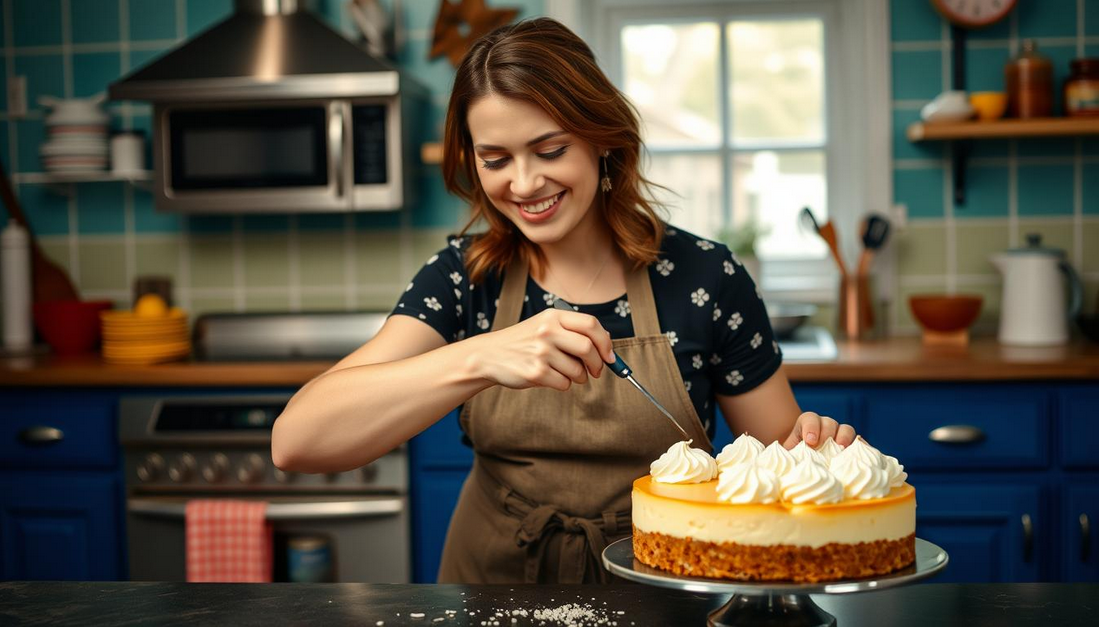
Achieving an even and firm crust requires proper technique. First, ensure that your crust mixture is evenly distributed in the pan. Use a flat-bottomed tool or your hands to press the mixture firmly into the pan, making sure to cover the bottom evenly. Chilling the crust before baking can also help it set properly.
Pre-Baking: When and Why
Pre-baking, or blind baking, is a step that can be crucial for preventing a soggy crust. It involves baking the crust before adding the cheesecake filling. This technique is particularly useful for cheesecakes with a high liquid content or those that are baked at a low temperature. Pre-baking for 8-10 minutes can help create a crispy crust that holds up well to the filling.
| Crust Type | Ingredients | Pre-Baking Time |
|---|---|---|
| Graham Cracker | Graham cracker crumbs, sugar, melted butter | 8-10 minutes |
| Nut-Based | Ground nuts, sugar, melted butter | 10-12 minutes |
| Cookie Crust | Crushed cookies, sugar, melted butter | 8-10 minutes |
How Can You Bake the Perfect Cheesecake? Step-by-Step Guide
To bake a cheesecake that’s both creamy and crack-free, follow this step-by-step guide. Baking a perfect cheesecake requires attention to detail and a methodical approach to ensure that the final product is not only delicious but also visually appealing.
Mixing the Filling Properly
The first step in baking the perfect cheesecake is mixing the filling properly. It’s crucial to avoid incorporating too much air into the batter, as this can lead to cracking during the baking process. Start by beating the cream cheese until it’s smooth, then gradually add sugar, eggs, and other ingredients, mixing just until combined.
The Water Bath Method
A water bath is essential for achieving a smooth and even texture. It helps to regulate the oven temperature around the cheesecake, reducing the risk of cracking and ensuring that the edges don’t overcook before the center is done. Wrap the outside of the springform pan with foil to prevent water from seeping in.
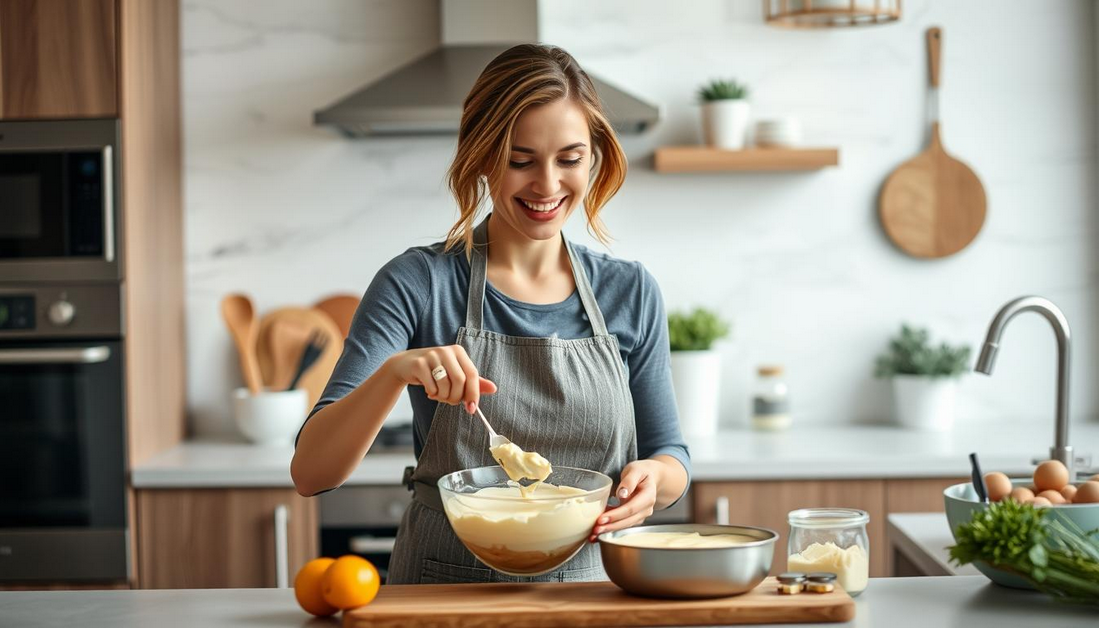
Ideal Oven Temperature and Position
Preheat your oven to the right temperature, usually around 325°F (165°C), and position the cheesecake in the center of the oven to ensure even cooking. Avoid opening the oven door during the baking time, as this can cause the cheesecake to sink or crack.
Knowing When Your Cheesecake Is Done
Knowing when your cheesecake is done can be tricky. A perfectly baked cheesecake will be slightly jiggly in the center and firm around the edges. The edges should be set, and the center should be just slightly soft. Avoid overbaking, as this can cause the cheesecake to dry out.
| Step | Description | Tips |
|---|---|---|
| 1. Mixing | Beat cream cheese until smooth, then add sugar, eggs, and other ingredients. | Mix just until combined to avoid incorporating too much air. |
| 2. Water Bath | Wrap the springform pan with foil and bake in a water bath. | Regulates oven temperature and prevents cracking. |
| 3. Baking | Bake at 325°F (165°C) with the cheesecake centered in the oven. | Avoid opening the oven door during baking. |
| 4. Checking Doneness | The cheesecake is done when it’s slightly jiggly in the center and firm around the edges. | Avoid overbaking to prevent drying out. |
Preventing Common Cheesecake Disasters
The perfect cheesecake is within reach if you know how to sidestep common baking disasters. Even with the best preparation, cheesecakes can sometimes go awry, but understanding how to prevent and fix issues is key to success.
Avoiding Cracks and Sunken Centers
Cracks and sunken centers are among the most common cheesecake issues. To avoid cracks, ensure your cheesecake cools gradually in the oven with the door ajar. This slow cooling process helps prevent sudden temperature changes that can cause cracking.
Using a water bath is another effective method to prevent cracking. It provides a stable baking environment, reducing the risk of overcooking the edges before the center is set.
Dealing with Overbaking and Underbaking
Overbaking can lead to a dry, cracked cheesecake, while underbaking results in a cheesecake that’s too soft or jiggly. To avoid these issues, use a thermometer to check your oven’s temperature accuracy.
Bake your cheesecake until the edges are set and the center is just slightly jiggly. This usually indicates that it’s done without being overcooked.
| Baking Issue | Cause | Solution |
|---|---|---|
| Cracking | Sudden temperature change | Gradual cooling in the oven |
| Overbaking | Too high oven temperature or too long baking time | Use a thermometer and check doneness regularly |
| Underbaking | Insufficient baking time | Bake until edges are set and center is slightly jiggly |
Troubleshooting Texture Problems
A cheesecake that’s too dry or too wet can be disappointing. To achieve the right texture, ensure your ingredients are at room temperature before mixing.
Overmixing can also lead to texture issues. Mix your batter just until the ingredients are combined, then stop mixing.
Fixing Last-Minute Issues
If you notice your cheesecake developing cracks or sinking during cooling, don’t panic. You can often fix these issues with toppings or sauces that distract from the imperfections.
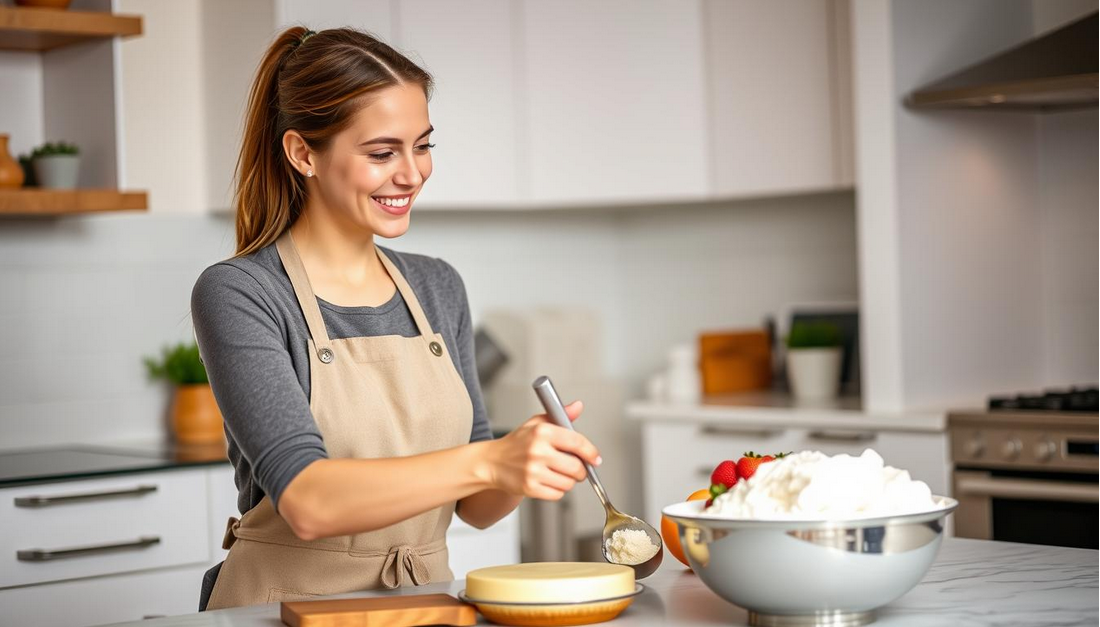
By understanding these common cheesecake issues and how to prevent or fix them, you’ll be well on your way to baking the best homemade cheesecake ever.
Cooling and Chilling Techniques for Optimal Results
Once your cheesecake is baked, the journey to perfection continues with proper cooling and chilling techniques. This critical phase ensures that your cheesecake sets correctly, achieving that creamy cheesecake texture everyone loves.
The Gradual Cooling Method
To prevent cracking and promote a smooth texture, it’s essential to cool your cheesecake gradually. Start by turning off the oven and letting the cheesecake cool in the oven with the door ajar. This slow cooling process helps reduce stress on the cheesecake, minimizing the risk of cracks.
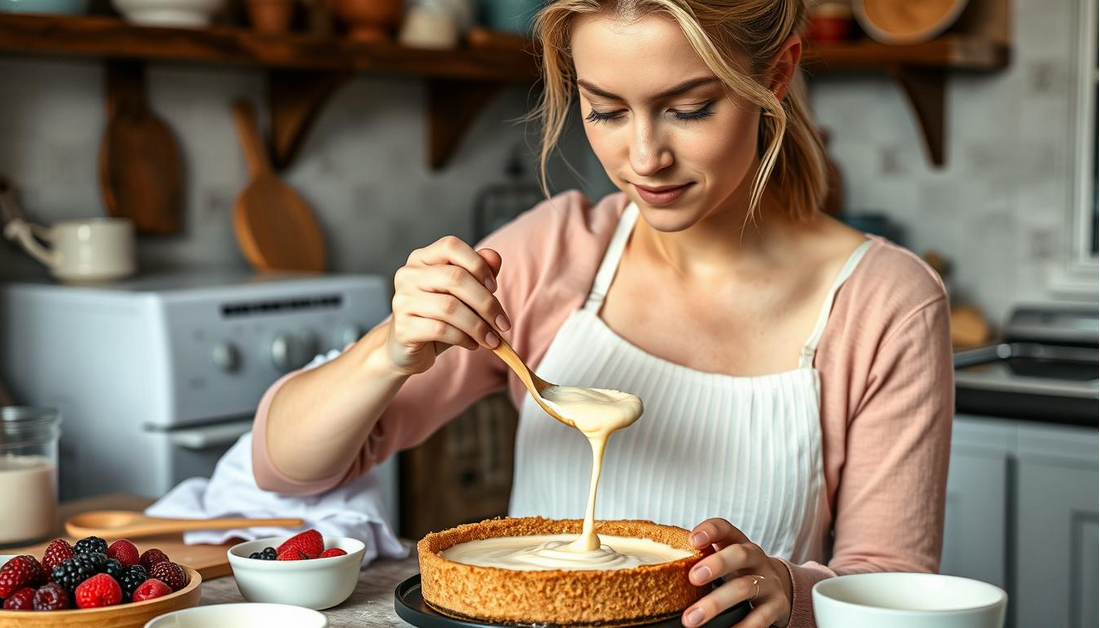
Proper Refrigeration Time
After the cheesecake has cooled to room temperature, it’s time to refrigerate it. Proper cheesecake chilling is crucial for allowing the flavors to meld together and the texture to set properly. Refrigerate your cheesecake for at least four hours, though overnight is best for an easy baked cheesecake that’s ready to impress.
Freezing Options for Make-Ahead Cheesecakes
For those who like to plan ahead, freezing is a great option. Once your cheesecake is fully cooled and set, you can wrap it tightly and freeze it. When you’re ready to serve, simply thaw it in the refrigerator overnight. This cheesecake cooling method ensures that your dessert is just as delicious as if it were freshly baked.
By following these cheesecake chilling and cooling techniques, you’ll be well on your way to creating a masterpiece that’s sure to delight. Whether you’re making a cheesecake for a special occasion or just because, these tips will help you achieve professional results every time.
Serving and Storing Your Masterpiece
With your cheesecake baked and chilled, the next steps are serving and storing it with care. A beautifully presented cheesecake is a delight to serve and enjoy, and proper storage ensures it remains fresh for as long as possible.
Perfect Slicing Techniques
To achieve clean, even slices, use a sharp knife, preferably one that’s been dipped in hot water and wiped dry. This technique helps prevent the knife from dragging or sticking to the cheesecake, ensuring a smooth cut. For a delicious cheesecake, presentation matters, so take your time to slice carefully.
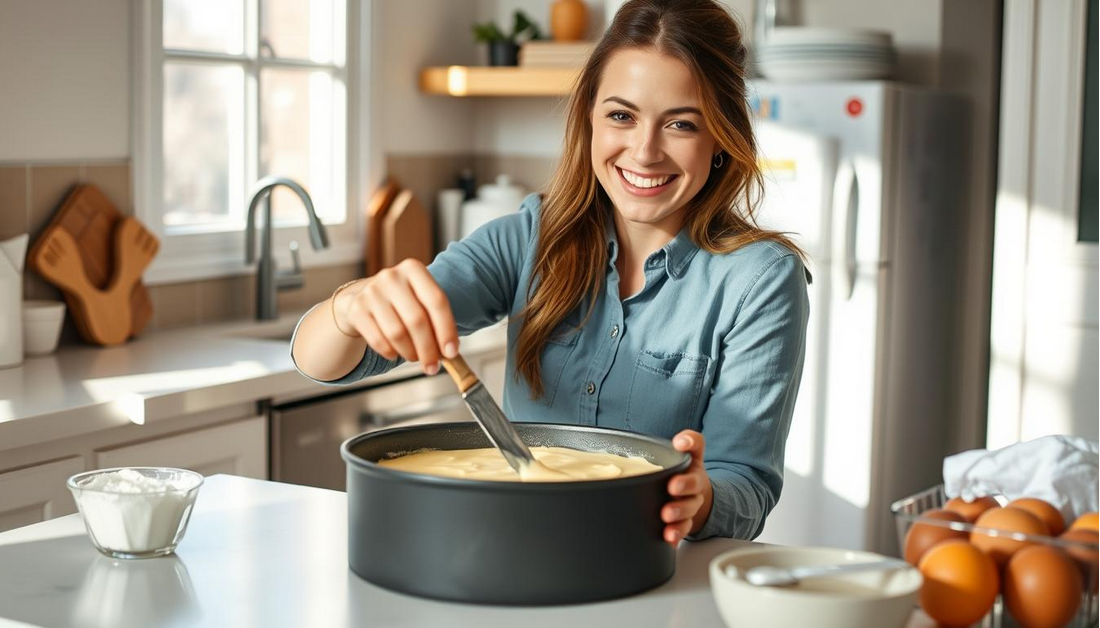
Creative Topping Ideas
Elevate your cheesecake with creative toppings. Fresh fruits, caramel sauce, or chocolate shavings can add a new dimension to your dessert. Consider the flavor profile of your cheesecake when choosing toppings to ensure they complement the existing taste. This is where you can get creative and make your cheesecake serving stand out.
Proper Storage Methods
For cheesecake storing, it’s crucial to keep it in an airtight container in the refrigerator. If you need to store it for an extended period, consider wrapping it tightly in plastic wrap or aluminum foil to prevent drying out. Proper storage maintains the cheesecake’s moisture and flavor.
How Long Will Cheesecake Stay Fresh?
The freshness of your cheesecake depends on storage conditions. Generally, a cheesecake can last up to 5 days when stored properly in the refrigerator. If frozen, it can last for several months. Always check for signs of spoilage before serving, even if it’s within the expected freshness period.
Conclusion
Creating a perfect cheesecake is a journey that requires patience, attention to detail, and a bit of practice. With the right guidance, you can master the art of baking a delicious homemade cheesecake that impresses family and friends.
By following this comprehensive guide, you’ve gained the knowledge and skills needed to produce a best cheesecake that’s both visually stunning and mouth-watering. Whether you’re using a classic graham cracker crust or experimenting with alternative crust options, the key to success lies in understanding the science behind the perfect cheesecake recipe.
As you continue to refine your cheesecake dessert skills, remember that practice makes perfect. Don’t be discouraged by initial setbacks – every baking experience is an opportunity to learn and improve. With this homemade cheesecake guide, you’re well on your way to becoming a cheesecake expert, ready to take on any baking challenge that comes your way.







